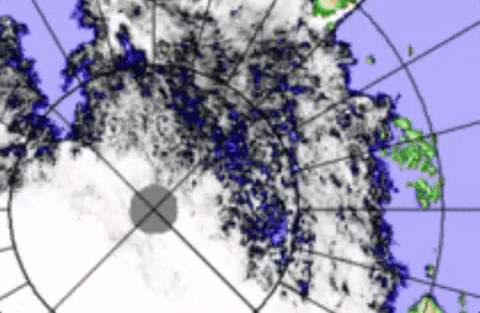Goodbye Waves can give a problem with determining wether they are sea ice or as they really are slush:
 |
| Goodbye Waves along with very thin emaciated ready to melt sea ice near Wrangel Island August 30, the thin ice almost looks like goodbye waves but they are not quite alike. |
August 27-28 , JAXA depiction is fairly good , but there is a mix between Goodbye Waves and sea ice, seen on 28 apparently having more sea ice, although the two are from sea ice, they are definitely not alike, the prominent gap breaking up the ice bridge in two is more prominent on NASA EOSDIS capture (above), the bridge is no more, what is left is going goodbye.
JAXA got the Gap almost the same with EOSDIS on August 29
Goodbye Waves likely caused this confusion. Look at the 2nd arm of the ice bridge reappearing on August 28.
The ice bridge collapsed quicker by the cuts of many cyclones, it was already impossible to walk on
it late July. It now exists like glue holding 2 tons together. WD August 30,2016





















